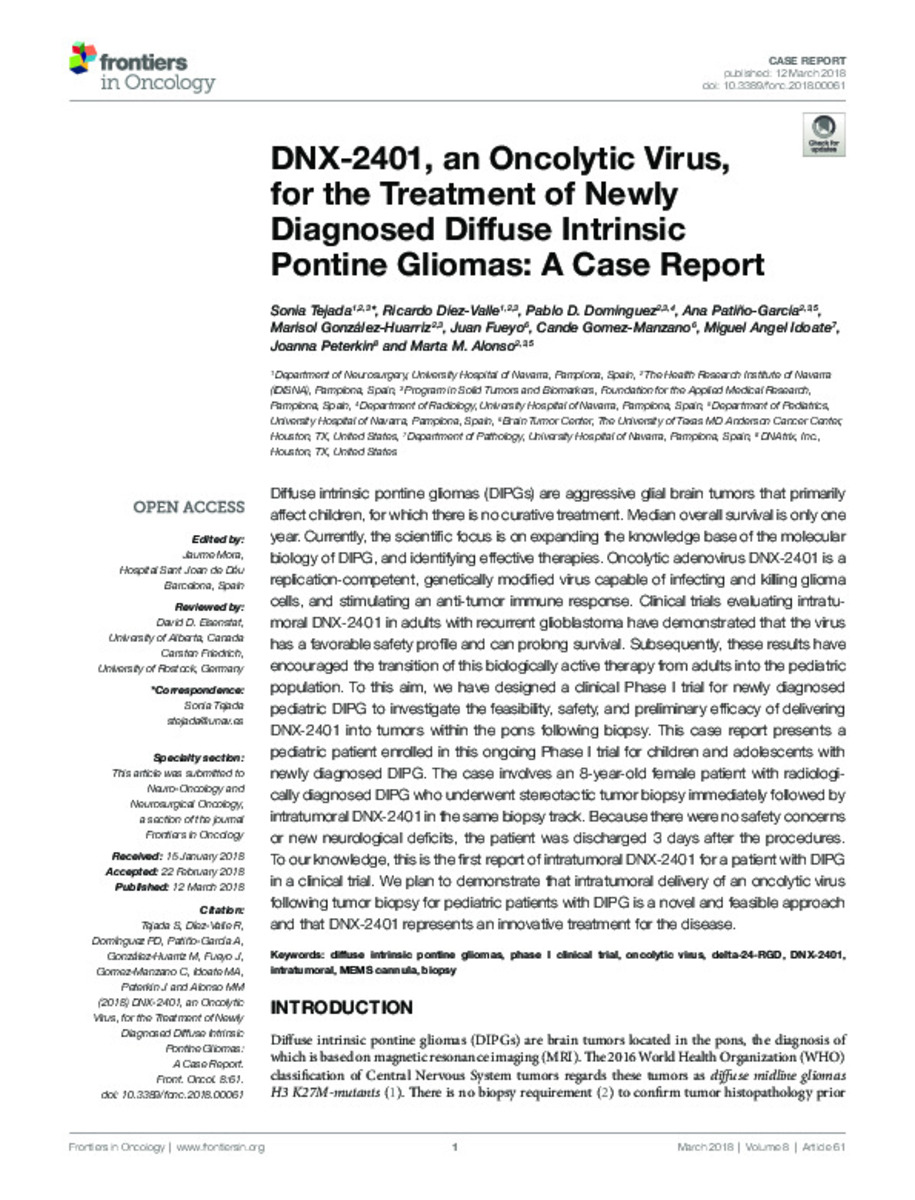DNX-2401, an oncolytic virus, for the treatment of newly diagnosed diffuse intrinsic pontine gliomas: a case report
Keywords:
DNX-2401
MEMS cannula
Biopsy
Delta-24-RGD
Diffuse intrinsic pontine gliomas
Intratumoral
Oncolytic virus
Phase I clinical trial
Note:
This is an open-access article
distributed under the terms of the Creative Commons Attribution License (CC
BY). The use, distribution or reproduction in other forums is permitted, provided
the original author(s) and the copyright owner are credited and that the original
publication in this journal is cited, in accordance with accepted academic practice. No
use, distribution or reproduction is permitted which does not comply with these terms.
Citation:
Tejada-Solis, S. (Sonia); Diez-Valle, R. (Ricardo); Dominguez, P.D. (Pablo Daniel); et al. "DNX-2401, an oncolytic virus, for the treatment of newly diagnosed diffuse intrinsic pontine gliomas: a case report". Frontiers in oncology. 12 (8), 2018, 61
Statistics and impact
0 citas en

0 citas en

Items in Dadun are protected by copyright, with all rights reserved, unless otherwise indicated.









